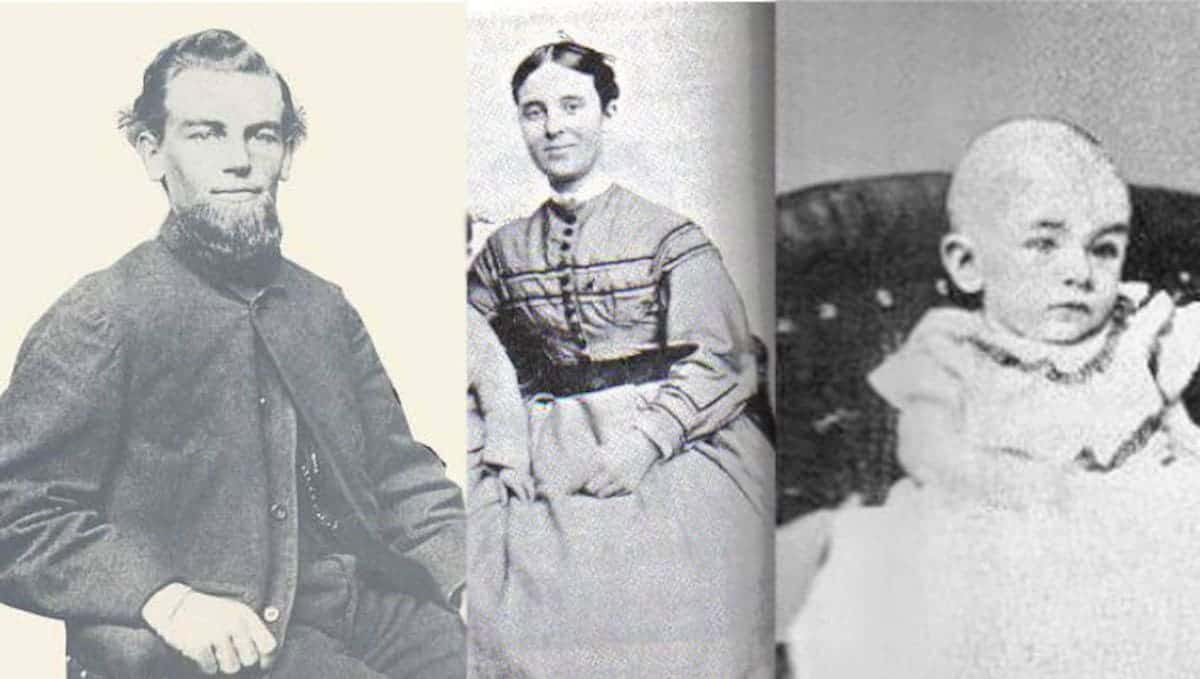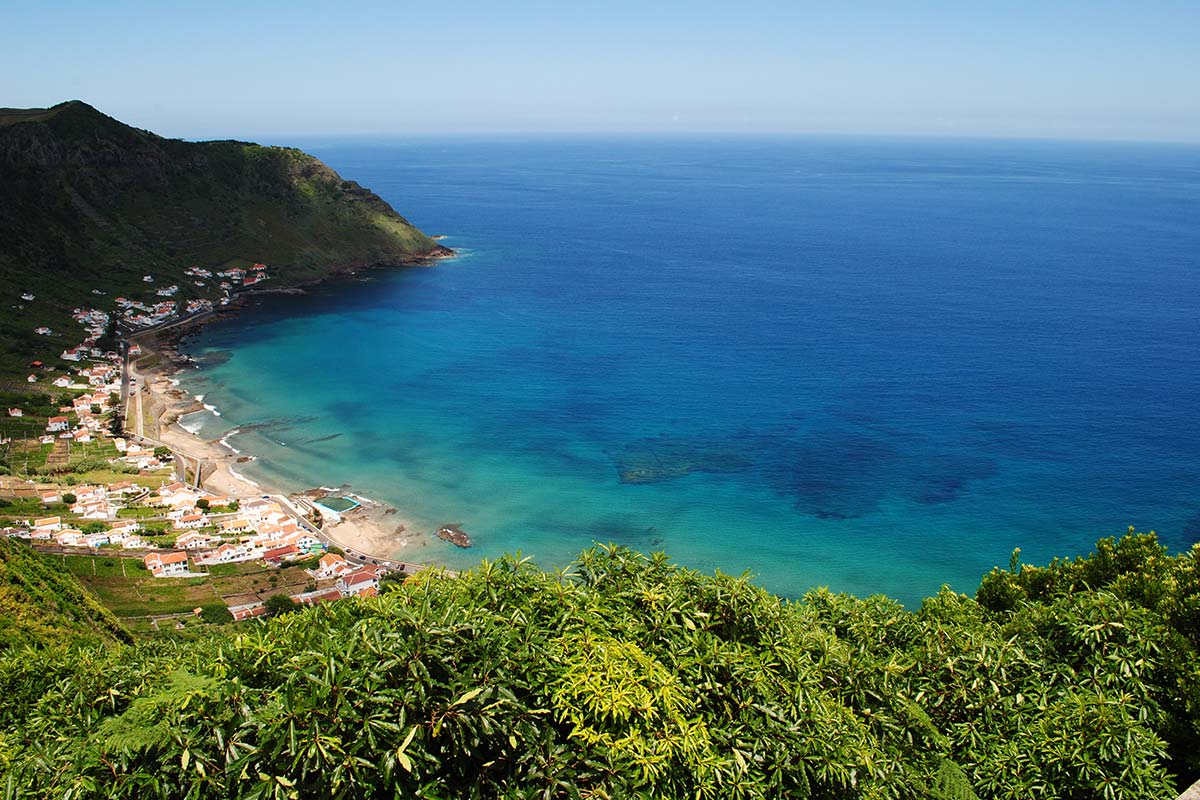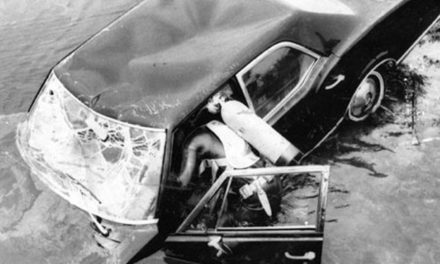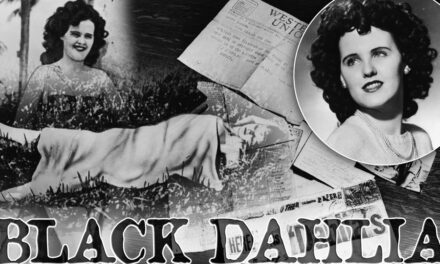The Mary Celeste
 The mystery juices will flow forever. A boat, intact, is found drifting in the north Atlantic, and when boarded, it’s a ghost ship. Almost everything in its place. But no captain, nor crew member, nor passenger. Simply gone, as was the single lifeboat.
The mystery juices will flow forever. A boat, intact, is found drifting in the north Atlantic, and when boarded, it’s a ghost ship. Almost everything in its place. But no captain, nor crew member, nor passenger. Simply gone, as was the single lifeboat.
No one from the ship was ever seen again, no trace found.
The Mary Celeste had been under the command of a responsible, experienced captain, Benjamin Briggs. He was sailing with his wife aboard, and young daughter, and a small crew for Genoa, Italy.
What was their fate? And more importantly, what would drive everyone off a stable, seaworthy ship, into a lifeboat not made for long-distance voyages?
The Mary Celeste mystery is a classic. What happened that day in December of 1872?
THE GREAT MARITIME MYSTERIES
Mysterious incidents at sea have it all: a crew that for a time is it’s own closed society, the vagaries of seas and tides and weather, and spice of exotic locations, sometimes unknown and unknowable locations, even sightings of exotic creatures, or lost islands. In lore, and in fact maritime mysteries live on, and not just in seafaring towns. The great North American classic, The Mary Celeste, will be discussed forever, we predict.
Below is a review of the basic facts. In a way, what happened is simple, but there’s a lot to discuss. A range of possibilities, lots to deduce.
On November 7, 1872, the 282-ton brigantine Mary Celeste set sail from New York Harbor on its way to Genoa, Italy. On board were the ship’s captain, Benjamin S. Briggs, his wife, Sarah, and their 2-year-old daughter, Sophia, along with eight crew members. Less than a month later, on December 5, a passing British ship called Dei Gratia spotted Mary Celeste at full sail and adrift about 400 miles east of the Azores, with no sign of the captain, his family or any of the crew. Aside from several feet of water in the hold and a missing lifeboat, the ship was undamaged and loaded with six months’ worth of food and water.Mary Celeste had a shadowy past. Originally christened Amazon, it was given a new name after a series of mishaps (including the sudden illness and death of its first captain and a collision with another ship in the English Channel). An investigation into whether to grant payment by its insurers to the Dei Gratia’s crew for salvaging the “ghost ship” found no evidence of foul play. Mary Celeste would sail under different owners for 12 years before its last captain deliberately ran it aground in Haiti as part of an attempted insurance fraud. In 2001, best-selling novelist and adventurer Clive Cussler claimed to have found the wreck of Mary Celeste, but later analysis of the timbers retrieved from the ship he found showed the wood was still living at least a decade after Mary Celeste sank.
Meanwhile, one of the most famous maritime mysteries in history endures:
Why would an experienced captain such as Briggs, or his sailors, abandon a perfectly sound ship?
Theories over the years have ranged from mutiny and pirate attack to assault by giant octopus or sea monster, while the more scientifically minded proposed an explosion caused by fumes from the 1,700 barrels of crude alcohol in the ship’s hold.
Sir Arthur Conan Doyle even weighed in with a short story published in 1884, in which the inhabitants of the ghost ship fell victim to an ex-slave seeking vengeance.
On the less-sensationalized end, an investigation chronicled in the 2007 documentary “The True Story of the Mary Celeste” was able to offer no definite conclusion, but did suggest a scenario in which a faulty chronometer, rough seas and a clogged on board pump could have led Briggs to order the ship abandoned shortly after sighting land on November 25, 1872.
According to the last entry in the ship’s log book, made that morning, Mary Celeste was within sight of the Azores island of Santa Maria, some 500 miles from where the Dei Gratia would find it nine days later.
History.com, Sara Pruitt, July 21, 2015
Theories of what happened to the ship run an astounding gamut.
Pirates slaughtered everyone on board, then took off (without the valuables!) in a rowboat. A mutiny occurred, with the sailors taking off in the rowboat, and leaving their own survival gear behind…
Freak storm conditions frightened the wits out of captain and crew, who decided a small rowboat was safer than a ship which now had water in the hold. So they took off, without even taking their basic gear with them…
There are even theories about rare monsters from the deep, or, believe it or not, alien abductions of the whole cast of crew and passengers. You name it, someone has proposed it.
But regarding the theories that might actually make sense, the number grows much smaller. One careful theorist has posed the idea that at one point, around November 25 when the ship was in sight of islands, the captain perceived unusually high levels of water in the hold, with no easy way to pump it all out nor perceive with precision how much water was there or how fast it was rising.
It’s conceivable the captain gave up on the ship, felt that he couldn’t risk the lives of crew and family (remember his two-year old was aboard!) on a sinking vessel, and ordered all to the safety of the sighted land. For some reason in this scenario, they never made the short journey, but were lost in a resurgence of storm, or dashed on the rocks. By why was no trace ever found or seen?
And again, why were so many items, easily grabbed and very handy, found abandoned on the ship?
There are some holes in this theory, we think, but at least it makes careful use of actual ship’s logs, actual facts. It’s not just constructed out of fancy.
Stay tuned, in the next sections, for some other carefully constructed theories.

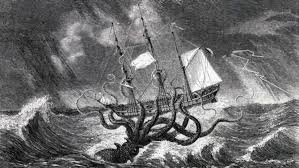
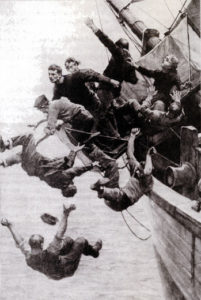
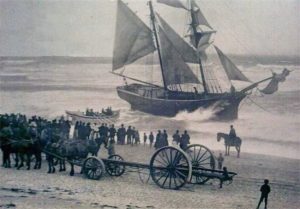
THEORIES
It is a riddle that has fascinated us for more than 100 years – what really happened to the crew of the legendary ghost ship? Now one scientist claims to know. …
 Attention … focused on the highly volatile cargo. It seemed highly possible that the leaking alcohol caught light, sending Captain Briggs into a panic and prompting the dreaded cry: ‘Abandon ship!’ It was a plausible explanation but has always been discounted because there was no sign of fire, or explosion. A blast of sufficient magnitude to persuade an experienced captain to take the last resort of abandoning ship would surely have left at least a few scorch marks on the wooden barrels, or in the hold.
Attention … focused on the highly volatile cargo. It seemed highly possible that the leaking alcohol caught light, sending Captain Briggs into a panic and prompting the dreaded cry: ‘Abandon ship!’ It was a plausible explanation but has always been discounted because there was no sign of fire, or explosion. A blast of sufficient magnitude to persuade an experienced captain to take the last resort of abandoning ship would surely have left at least a few scorch marks on the wooden barrels, or in the hold.
Now, however, 21st century scientific techniques have been used to finally solve the 19th century mystery. An experiment, conducted by a scientist at UCL for a Channel 5 documentary which will be screened next week, shows that an explosion may indeed be the key to the fate of Captain Briggs, his family and crew.
 Dr Andrea Sella [UCL Chemistry] built a replica of the hold of the Mary Celeste.
Dr Andrea Sella [UCL Chemistry] built a replica of the hold of the Mary Celeste.
Using butane gas, he simulated an explosion caused by alcohol leaking from the ship’s cargo.
Instead of wooden barrels, he used cubes of paper. Setting light to the gas caused a huge blast, which sent a ball of flame upwards. Surely the paper cubes would be burned or blackened or the replica hold damaged.
Remarkably, neither happened.
“What we created was a pressure-wave type of explosion,” says Dr Sella. “There was a spectacular wave of flame but, behind it, was relatively cool air. No soot was left behind and there was no burning or scorching.
“Given all the facts we have, this replicates conditions on board the Mary Celeste. The explosion would have been enough to blow open the hatches and would have been completely terrifying for everyone on board.
Such a massive explosion could have been triggered by a spark caused when two loose barrels rubbed together, or when a careless crew man, pipe in mouth, opened a hatch to ventilate the hold during the long crossing from New York to Italy. Records show that 300 gallons of alcohol had leaked – more than enough to create a terrifying explosion.
“It is the most compelling explanation,” says Dr Sella. “Of all those suggested, it fits the facts best and explains why they were so keen to get off the ship.” …
ucl.ac.uk, Adrian Lee, May 20, 2006
We don’t know if that’s the explanation or not, but it’s much more intelligent than a lot of the other musings over the years about what might have gone on.
Experts differ on whether or not the type of alcohol and chemicals the ship carried would have created those conditions, but Dr. Sella does construct a scenario that accounts for a rather rapid departure from the ship, but… no so fast.
Wouldn’t a startled crew have noticed, as they pulled their nerves back together, that such an explosion had left no fire behind, and might be a one-off event, leaving a fairly safe ship for them to sail? Changing to a short-distance rowboat mid-ocean, known by experienced sailors as a hopeless way to be left on the sea, seems like a drastic action when the ship was intact, not sinking, not on fire.
If land, even small islands, were in sight that could change the equation. But still, would sailors with experience and nerve abandon a ship in good enough shape to be found still quite seaworthy, many days and hundreds of miles later?
Until Dr. Sella can answer those questions, he’s only offered an interesting science experiment.
In fact, all the Mary Celeste theories suffer from clear logical flaws. Except, perhaps, one of them.
AN ELEGANT THEORY…WHAT DO YOU THINK?
 The best book about the Mary Celeste is probably “Ghost Ship” by Brian Hicks.
The best book about the Mary Celeste is probably “Ghost Ship” by Brian Hicks.
Toward the end of a thorough history of the matter, he offers the following theory:
In essence, all those missing gallons of alcohol (which may actually have been industrial methanol and the like) had leaked to become fumes, pouring out of the hold finally in such a thick vapor as to be stunning, dizzying in their effect. Even though the fumes poured out into a fully open space, their immediate effect was intense. Crew and passengers were becoming lightheaded, almost nauseous.
With the specter of sailors almost keeling over from too much alcohol fumes suddenly permeating the air, the captain made a rapid (and perhaps light-headed) decision. Let’s all jump into the lifeboat for an hour or two, trail behind the ship by towline, breathe fresh air as the ship airs out and then reboard and get that thing under control.
They did that in somewhat hurried fashion, with the sailors assigned to trim the sails doing a poor job, once again with possible dizziness in the mix.
And two heartbreaking things happened. The towline snapped, a rope that no one noticed was old and fraying. And the partially trimmed sails of the mother ship caught a resurgence of wind, and sent the boat moving faster than anyone could row, especially over time and distance.
As the ship gradually moved farther and farther away, in the open sea, from an overcrowded rowboat, it’s painful to even imagine the scene. Desperate rowing, horribly painful rowing muscles for a time. And when it became clear the ship would keep moving in the breeze, ever farther away, an unspeakable despair. Even with a lady on board, there must have language used that “would make a sailor blush.”
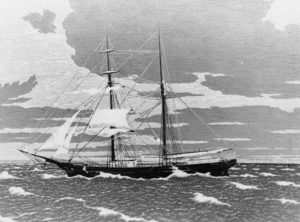 In the ocean on such a vessel of course their fate was sealed. No trace was ever found, because they all sleep in “Davey Jones’ Locker.”
In the ocean on such a vessel of course their fate was sealed. No trace was ever found, because they all sleep in “Davey Jones’ Locker.”
Now that’s a theory built on a mountain of conjecture, you might say. And you’d be right, it assumes a lot, a lot of things would have to happen, in a specific sequence, for that to be the true scenario. (Although, it should be noted, the other theories also conjure up specific sequences.)
But we offer Brian Hick’s theory because it’s an “elegant theory,” which is to say, if it’s valid, all the facts fit. No round facts have to be jammed into square holes.
It would explain why the Mary Celeste was found drifting in the open sea, fully seaworthy, yet abandoned–as if a tiny lifeboat were a better option. It would explain the odd, ragged setting of the sails. It would explain all those hatches left open, rare in sailing because so much water can find its way below. It would explain why no trace of either captain or crew or rowboat were ever found.
It would explain why any valuables that pirates might covet were still onboard, undisturbed, and no sign of a skirmish was left behind. And most of all, it would explain why all the clothing and personal items that anyone jumping ship for a longer time would quickly grab were still in sailor’s personal quarters.
“The clues found on the ship fit the scenario perfectly. Everything was wet because the Mary Celeste had been opened up to allow a breeze to pass through. The men weren’t wearing their foul-weather gear because it was a clear, moderate day. They were not carrying their pipes because, with the fumes wafting through the ship, no one dared light a smoke….Over the years, dozens of people dreamed up wild stories about why the…sailors left all their clothes, their valuables and the rest of their belongings onboard without concluding the most obvious: because they expected to come back.“
Brian Hicks, “Ghost Ship,” 2004
So the broken tow-line theory can never be proven, perhaps never refuted, but what do you think?
Something very anomalous happened to the Mary Celeste, prompting a century-and-a-half of intrigue.
What do you think it was?

